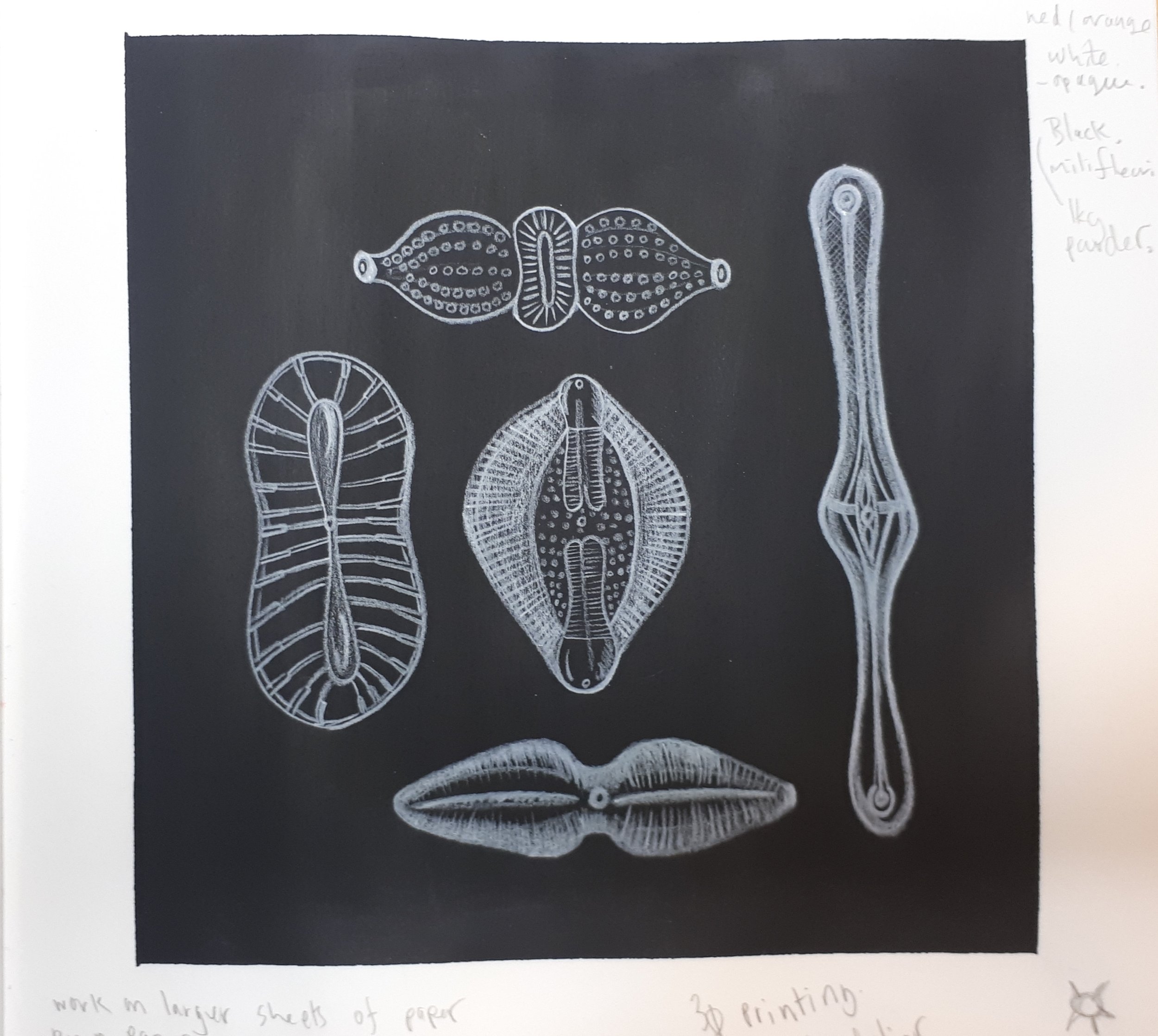I’ve been continuing with my concept designs and sketchbook development at the same time that Ian has been experimenting with the blown glass forms. I’m really enjoying the forward and backwards collaboration which is occurring as the development time progresses. Even though this is a long-distance collaboration (me being in Derbyshire and Ian in Plymouth), it is working well through regular Zoom meeting, and the sharing of images and documentation of the glass process.
I wanted to go back to observing the diatom forms, but with the thought of how they will be explored in glass at the same time. With more knowledge of the different glass techniques, I am now able to visualise how each ‘experiment’ or test piece will be put together.
Sketchbook detail
In the above image I am playing around with some ideas which Ian has already made and starting to think about how these objects will float. I think instead of sitting working out the maths for this, it is better to experiment and test the pieces as they are made. We both like the idea of the sculptures floating on water and possibly concealing a hidden decorative element beneath the water surface.
Test piece showing stopper
Completed test piece
Photography by Nathan Soper
Sketchbook detail
Diatom shapes, textures and forms which could be explored in glass
The above video clip shows an early piece of blown glass made by Ian, he used my diatom drawings as inspiration. I really like the contrast of the translucent aqua blue against the opaque white. This is something we will take forward when considering colour for the next stage.
Sketchbook detail
Thinking about the technical side of how the glass pieces will float.
Sketchbook detail
Focusing on form and texture details of diatoms. Could these more details elements be 3D printed?
When working in my sketchbook, it is interesting to see how my ideas flow. This often changes from observation drawing; looking at form, pattern and texture to more imaginative concept design and technical problem solving. I was really enjoying observing the fine details of the patterns in the diatoms and got carried away thinking how we could represent this in the glass with bubbles.
Ian made some intricate ‘stopper’ pieces which fit perfectly into the larger more bulbous vessel. Would it be possible to contain something within this space? Could it create its own eco-system, or could be introduce another material with the glass?
I then started looking at Sea creatures, particularly jellyfish, and was intrigued by the often brightly-coloured insides which were visible through the translucent layers. I thought this would be an interesting concept to play with using translucent and opaque colours of glass.
Sketchbook detail
Sketchbook detail
Ian manipulating the glass stopper
Photography by Nathan Soper
Sketchbook detail
Diatom arrangement
Ian pointed out that these Victorian style diatom arrangements reminded him of Millefiori Murano Glass (a thousand flowers). We thought that this technique could be explored for the more decorative areas. I really like the dark backgrounds which make the brightly coloured glass pop.
Antique microscope slide of diatoms arranged in highly complex patterns
2.5 inch Perthshire paperweight with about 12 radial spokes and a standard 1-1-2-2 pattern of millefiore canes












